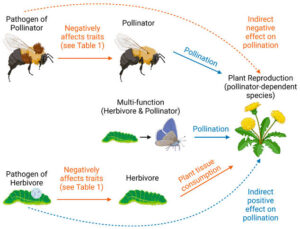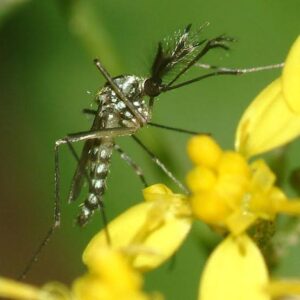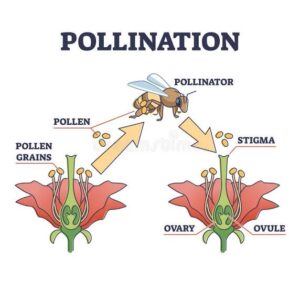Back to: ZOOLOGY 200 Level
WELCOME TO CLASS
It’s great to have you back! Today’s topic will help you understand the relationship between invertebrates and humans—especially how they affect our health, food, and environment. We’ll be studying pollination, pests, and vectors of disease. These three areas show how invertebrates can be both helpful and harmful depending on the situation.
Pollination, Pests, Vectors Of Disease
Pollination
Pollination is the process by which pollen is transferred from the male part of a flower (anther) to the female part (stigma) to enable fertilisation and seed production. Many invertebrates, especially insects, play a vital role in this process.

Bees, butterflies, moths, beetles, and even some flies visit flowers to collect nectar. In doing so, they carry pollen from one flower to another, allowing plants to reproduce. In Nigeria, crops like okra, pepper, mangoes, and pawpaw rely on these pollinators. Without them, food production would drop and many plant species would struggle to survive.
Pests
Not all invertebrates are helpful. Some are considered pests because they destroy crops, stored food, fabrics, and even structures. They can also cause discomfort or allergic reactions.
Examples include:
- Locusts, which swarm in large numbers and devour crops, leading to food shortages.
- Weevils, which infest stored grains like rice and beans, causing significant economic losses.
- Termites, which damage wooden structures, books, and furniture.
- Mosquitoes, which are not just pests due to their bites but are also dangerous disease vectors.
Managing pests often involves cultural practices (like crop rotation), biological control (using natural predators), and chemical methods (insecticides), though care must be taken to avoid environmental harm.

Vectors of disease
Some invertebrates serve as vectors—they carry and transmit diseases from one host to another. This is one of the major public health challenges, especially in tropical regions like Nigeria.
- Mosquitoes spread malaria, yellow fever, dengue, and Zika virus.
- Tsetse flies transmit sleeping sickness (African trypanosomiasis).
- Sandflies transmit leishmaniasis.
- Fleas and lice can transmit typhus and plague.
Controlling these vectors involves using insecticide-treated nets (ITNs), environmental sanitation to remove breeding sites (like stagnant water), wearing protective clothing, and health education.

Summary
- Invertebrates like bees and butterflies are important pollinators that support food production.
- Pests such as locusts, weevils, and termites cause serious damage to crops, stored food, and property.
- Some invertebrates are vectors of disease, including mosquitoes, tsetse flies, and sandflies.
- Managing pests and vectors involves combining biological, cultural, and chemical methods responsibly.
Evaluation
- Explain the role of insects in pollination and name two crops they help.
- Give two examples of insect pests and what they damage.
- What is a disease vector? Mention two invertebrates that act as vectors.
- Describe one way pests or disease vectors can be controlled safely.
You’ve just uncovered how invertebrates can affect both our food supply and our health. Keep building your knowledge—you’re making progress every day. With Afrilearn, learning never stops. Let’s keep moving forward to the next exciting topic!
